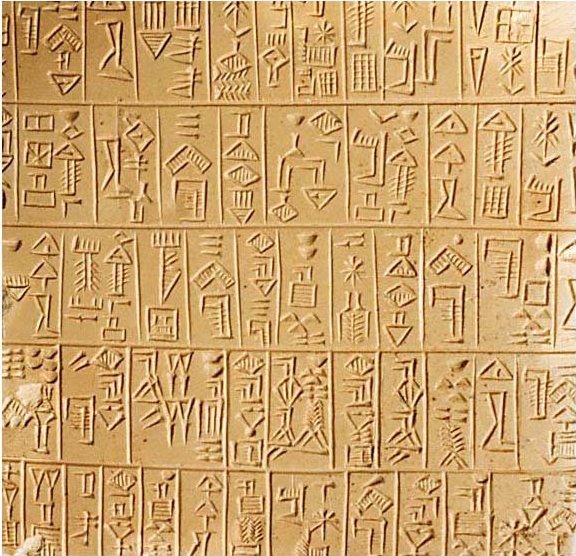 |
| Schøyen Collection MS 3029 (c. 2600 BC, Wikipedia) |
Lugalannemundu [king of Adab]…is “king of the four quarters (of the universe),” a ruler “who made all the foreign lands pay steady tribute to him, who brought peace to (literally, ‘made lie in the pastures’) the peoples of all the lands, who built the temples of all the great gods, who restored Sumer (to its former glory), who exercised kingship over the entire world.”
Immediately what came to mind was Psalm 23:1-3 (ESV):
The LORD is my shepherd; I shall not want.
He makes me lie down in green pastures.
He leads me beside still waters.
He restores my soul.
He leads me in paths of righteousness for his name’s sake.
The second line (v. 2a) is generally understood to infer peace under the guise of a metaphor that continues through the entire stanza, if not the whole poem. However, Kramer’s statement makes me wonder if there’s more to the text. The Sumerians wrote in a cuneiform script that was both logographic (based on words) and syllabic (based on syllables). I began to wonder if Kramer meant that some sort of symbol, originally used to convey the idea of “being made to lie in pastures,” later became a sign for writing the word “peace.” Unfortunately, I wasn’t able to find a copy of the Lugal-Anne-Mundu inscription online, and the Sumerian lexicons I found didn’t reveal any relationships between words that may mean “peace” and the concept of “being made to lie in pastures.” Sumerian is not an amateur-friendly language, so I’ve hit a dead end for now when it comes to deciphering the text.
The reason why I’m curious about it is because there has been a long-standing controversy over what sort of influence – if any – did the Sumerian civilization have over the Hebrew one. Abram (Abraham) is spoken as having come from Ur Kaśdim, “Ur of the Chaldeans” (Genesis 11:27-32, 15:7; cf. Nehemiah 9:7). However, the passages are commonly assumed to be referring to the earlier city-state of Sumer. The other Sumerian-Hebrew relationships suspected are even weaker. Despite unsuccessful attempts by scholars to connect the Phoenician alphabet, which was used and adapted by many Semitic peoples like the Hebrews, with the Sumerian cuneiform, adopted by the Semitic Akkadians, some Christians argue direct descent. In addition, some promote the “Wiseman hypothesis,” identifying the use of the Hebrew word toledoth (e.g., “account,” “generations,” “histories”) in the early chapters of Genesis as evidence of a borrowing of the Sumerian and Mesopotamian (Babylonian) descriptive ending called the “colophon.” They argue this despite its apparent use as a title rather than closure in the Bible.
Because of all of this shaky evidence, at this point, I remain unconvinced that Sumerian had any profound influence on Genesis. However, I’ll admit that Kramer’s statement has me wondering about what King David was actually trying to tell us in Psalm 23. I guess that over-studied chapter does have something new to offer.


